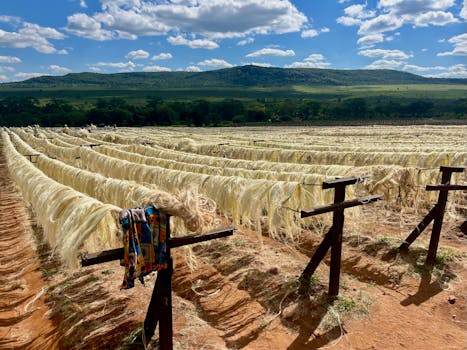Mapping the Fiber Landscape: Key Players and Projects Across Africa

Mapping the Fiber Landscape: Key Players and Projects Across Africa
Introduction to Fiber Optics in Africa
The African continent is undergoing a significant transformation in its telecommunications landscape, driven by the deployment of fiber optic infrastructure. Fiber optics has become a crucial component of modern telecommunications, offering high-speed data transmission, reliability, and scalability. As the demand for digital services continues to grow, the need for robust and efficient connectivity has never been more pressing. In this article, we will delve into the world of fiber optics in Africa, exploring the key players and projects that are shaping the fiber landscape across the continent.
The African fiber optic market has experienced significant growth over the past decade, driven by investments from governments, private companies, and development institutions. According to a report by ResearchAndMarkets.com, the African fiber optic market is expected to reach $13.48 billion by 2027, growing at a compound annual growth rate (CAGR) of 8.5% from 2020 to 2027.
Key Players in the African Fiber Optic Market
Several key players are driving the growth of the fiber optic market in Africa. These include:
Major telecommunications companies such as MTN, Vodacom, and Orange, which are investing heavily in fiber optic infrastructure to support their network operations and expand their service offerings.
Fiber optic cable manufacturers such as Prysmian Group, Nexans, and Sterlite Technologies, which are supplying the necessary cables and equipment for fiber optic projects across Africa.
Development institutions such as the African Development Bank, the World Bank, and the European Investment Bank, which are providing financing and technical support for fiber optic projects in Africa.
Notable Fiber Optic Projects in Africa
Several notable fiber optic projects are currently underway or have been recently completed in Africa. These include:
The African Coast to Europe (ACE) submarine cable, which spans over 17,000 kilometers and connects 25 countries in Africa and Europe.
The West Africa Cable System (WACS), which connects 15 countries in West Africa and provides high-speed internet connectivity to the region.
The East African Submarine Cable System (EASSy), which connects 10 countries in East Africa and provides high-speed internet connectivity to the region.
The Africa-1 submarine cable, which will connect 23 countries in Africa and provide high-speed internet connectivity to the region.
Challenges and Opportunities in the African Fiber Optic Market
Despite the growth and potential of the African fiber optic market, there are several challenges that need to be addressed. These include:
The high cost of deploying fiber optic infrastructure, particularly in rural and underserved areas.
The lack of regulatory frameworks and policies to support the development of fiber optic infrastructure.
The limited availability of funding and financing options for fiber optic projects.
However, there are also several opportunities for growth and development in the African fiber optic market. These include:
The increasing demand for digital services and high-speed internet connectivity.
The growing need for reliable and efficient connectivity in key sectors such as healthcare, education, and finance.
The potential for fiber optic infrastructure to support economic growth and development in Africa.
Conclusion
In conclusion, the African fiber optic market is undergoing a significant transformation, driven by the deployment of fiber optic infrastructure. The key players and projects shaping the fiber landscape across Africa are crucial to the development of the continent’s telecommunications sector. While there are challenges that need to be addressed, there are also several opportunities for growth and development in the African fiber optic market.
